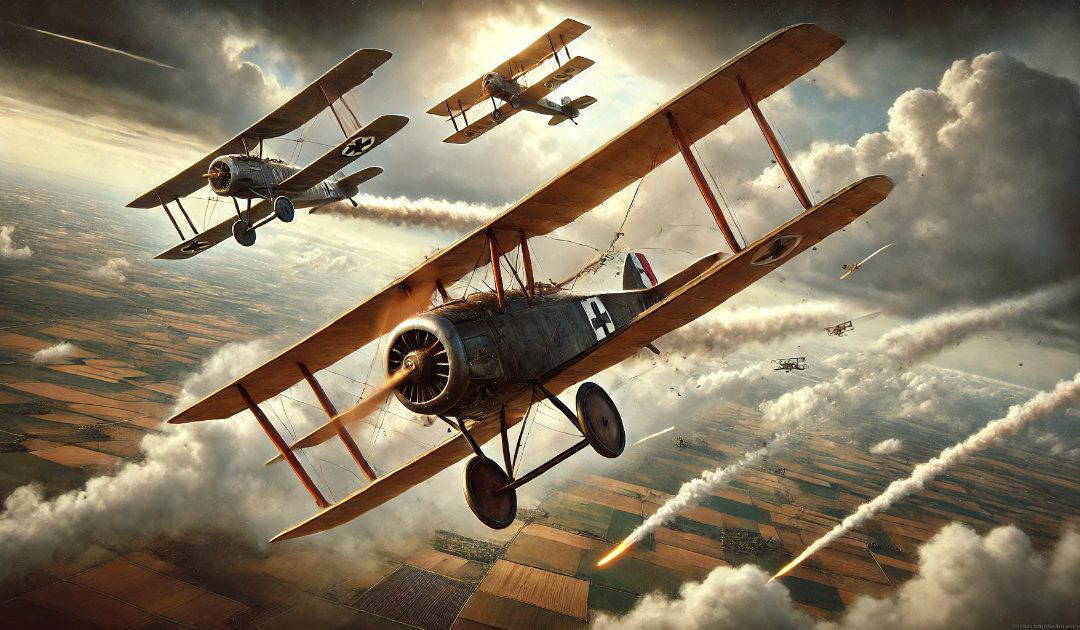On the 18th of April, 1915, Roland Garros, a French fighter pilot in World War I, was shot down and glided to a landing on the German side of the lines. Whilst I am not fanatically interested in tennis, I was an avid reader of the Biggles books as a boy, and learnt to fly as soon as I could afford it.
Roland Garros is a name primarily associated with the famous French Open tennis tournament. However, the man behind the name, Eugène Adrien Roland Georges Garros, was not a tennis player, but an aviation pioneer whose adventurous spirit and daring feats have left a lasting legacy beyond the world of sports.
Born on the 6th of October, 1888, in Saint-Denis, Réunion, a French overseas department, Garros moved to France for his education. He was initially drawn to automobiles and even participated in several races. His journey into the realms of aviation began during a visit to an air show in 1910, which ignited a passion for flying. Garros quickly set his sights on mastering this new and thrilling form of transportation.
By 1911, Garros had acquired his pilot’s license and began breaking records. One such feat included setting an altitude record by flying at 5,610 meters, a testament to his skill and bravery.
At a time when aviation was still in its nascent stage, Garros was already pushing the boundaries of what was deemed possible, capturing the imagination of the public and his contemporaries.
Perhaps his most notable achievement came on the 23rd of September, 1913, when Garros became the first person to fly non-stop across the Mediterranean Sea. In a Morane-Saulnier monoplane, he took off from Fréjus in the south of France and landed in Bizerte, Tunisia, covering a distance of over 700 kilometers in nearly eight hours. His successful crossing was a monumental achievement for aviation, showcasing the potential of aircraft for long-distance travel and marking him as one of the leading figures in early aviation.
Garros’s involvement in aviation took a different turn with the onset of World War I. By 1914, he had joined the French army, eager to contribute his skills to the war effort. He initially served as a reconnaissance pilot, but his innovative mind quickly led to further developments. Understanding the need for aircraft to be more than just observational tools, Garros pioneered the development of a forward-firing machine gun mounted on an aircraft, which allowed pilots to aim by pointing the plane. This advancement transformed aerial combat and laid the groundwork for the fighter planes that would dominate the skies.
Unfortunately, Garros’s wartime exploits would eventually lead to his capture. In 1915, his plane was forced down behind enemy lines, and Garros was captured by the Germans, spending nearly three years as a prisoner of war. Yet, his resilience never wavered. He successfully escaped captivity in 1918 and returned to the front lines, eager to resume his flying.
Tragically, Roland Garros’s life was cut short on the 5th of October, 1918, just weeks before the end of the war. He was shot down in combat over the Ardennes region, a day shy of his 30th birthday. His legacy, however, endures. In 1928, the Stade Roland Garros stadium was inaugurated in Paris, named in his honour, and today it hosts the French Open, one of tennis’s Grand Slam tournaments.
Roland Garros’s life was a testament to courage and innovation. He lived with a tenacious spirit, always seeking to explore beyond the known limits, whether in setting aviation records or in his wartime service. His contributions to aviation, particularly in combat, were pioneering and set the stage for the future of aerial warfare. Today, while he is remembered primarily through the lens of tennis, the story of Roland Garros the man is one of remarkable achievement and inspiration in the face of adversity.
Garros embodied the spirit of adventure that characterised early 20th-century aviation. His feats in the air pushed the boundaries of human accomplishment and inspired a generation of aviators. Even today, his legacy serves as a powerful reminder of the indomitable human spirit and the relentless pursuit of progress.

